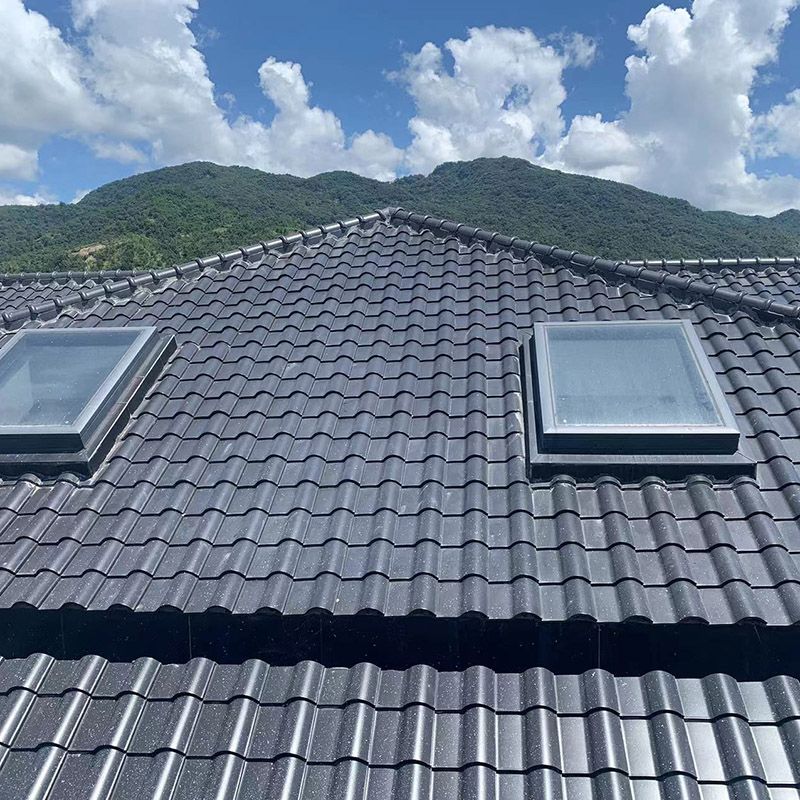Pitched Roof Skylight: Bringing Natural Light and Style to Your Home
2025-05-07
Skylights are a fantastic way to introduce natural light into your home, brighten up spaces, and enhance the overall aesthetic. Among the various types of skylights available, pitched roof skylights stand out due to their unique ability to blend with the sloping angles of a pitched roof, making them not only functional but also a striking design feature. This article explores the advantages, types, and considerations when installing pitched roof skylights in your home.

What is a Pitched Roof Skylight?
A pitched roof skylight is a type of skylight designed specifically for installation on a sloped roof, such as those commonly found in attic spaces, lofts, or homes with a traditional architectural style. These skylights are typically installed parallel to the pitch of the roof, allowing for an optimal angle that maximizes natural light while maintaining the integrity and structure of the roof.
Unlike traditional flat skylights, pitched roof skylights are designed to be seamlessly integrated into the roof's slope, ensuring that water runoff, weather resistance, and ventilation are properly addressed. They offer a sleek and modern look, making them a popular choice for both contemporary and classic homes.
Benefits of Pitched Roof Skylights
1. Enhanced Natural Light
One of the most obvious benefits of installing a pitched roof skylight is the influx of natural light it provides. The sloped design of the roof often allows for a larger area of glass to be exposed to the sun, which can significantly brighten up dark, gloomy spaces. This is especially beneficial for rooms with minimal access to windows or those located in the interior of a home.
2. Improved Ventilation
Many pitched roof skylights come with ventilation options that allow fresh air to circulate through your home. These skylights can be designed to open and close, allowing for better airflow and reducing the need for air conditioning. In addition, the natural ventilation can help reduce the buildup of moisture, preventing mold and mildew growth.
3. Energy Efficiency
By harnessing natural light, pitched roof skylights can reduce the need for artificial lighting during the day, which can lower energy consumption. Moreover, modern skylights are often equipped with energy-efficient glass that helps to regulate indoor temperatures by reducing heat loss in the winter and minimizing heat gain in the summer.
4. Aesthetic Appeal
Pitched roof skylights can enhance the overall design of your home by adding a touch of elegance and architectural sophistication. They create a focal point in the ceiling, giving the room a sense of openness and visual appeal. The natural light that filters through can highlight interior features, such as decorative elements or furniture, and create a warm and inviting atmosphere.
5. Increased Property Value
Adding a skylight to a pitched roof not only enhances the functionality of a space but also adds value to your home. Homebuyers often appreciate the aesthetic appeal and the additional natural light provided by skylights. As a result, installing a pitched roof skylight can be a great investment if you're looking to sell your property in the future.
6. Connection to the Outdoors
A pitched roof skylight offers a unique way to bring the outdoors in. With a view of the sky above, you can enjoy the changing weather, the beauty of the clouds, or even stargazing at night. This connection to the outdoors can have a positive impact on your well-being, creating a more serene and uplifting environment inside your home.
Types of Pitched Roof Skylights
There are several types of pitched roof skylights, each offering different features to suit various needs and design preferences.
1. Fixed Pitched Roof Skylights
Fixed skylights are stationary and do not open. They are ideal for adding natural light to a room without the need for ventilation. Fixed pitched roof skylights are often the most energy-efficient option and are typically used in areas where airflow is not a concern, such as hallways or bathrooms.
2. Ventilated Pitched Roof Skylights
Ventilated skylights can be opened to allow fresh air to enter the space. These are perfect for rooms that require additional airflow, such as kitchens, bathrooms, or attic spaces. The ventilation helps to reduce indoor humidity levels, preventing the buildup of moisture and improving indoor air quality.
3. Solar Skylights
Solar-powered skylights are equipped with solar panels that power the opening and closing mechanism, making them an energy-efficient and environmentally friendly option. These skylights can be equipped with either fixed or ventilated designs, and the solar panels can help power the unit without drawing on your home's electricity supply.
4. Tubular Skylights
Tubular skylights are a compact version of traditional skylights, designed to bring light into smaller or more confined spaces, such as closets or hallways. The light is captured by a dome on the roof and directed through a reflective tube into the room below. While typically not as large as traditional pitched roof skylights, they offer a great option for smaller spaces.
Considerations When Installing Pitched Roof Skylights
While pitched roof skylights offer numerous benefits, there are a few important factors to consider before installation:
1. Roof Structure and Material
The structure and material of your roof will determine the type of skylight that can be installed. Certain roof materials, such as slate or tile, may require special installation techniques to ensure a secure and watertight seal.
2. Energy Efficiency
It's essential to choose a skylight with energy-efficient glass and proper insulation to prevent heat loss or gain. High-performance glazing options, such as Low-E glass, can help maintain a comfortable temperature indoors while reducing energy costs.
3. Waterproofing and Weather Resistance
Proper installation is crucial to prevent water leakage around the skylight. Ensure that the skylight is installed by a professional to ensure it is sealed properly and can withstand heavy rain and snow, which are common concerns with sloped roofs.
4. Sun Exposure and Positioning
Consider the positioning of the skylight and the amount of direct sunlight the space receives throughout the day. For example, if you want to maximize daylight in the afternoon, you may opt for a skylight positioned on the south or west-facing slope.
5. Maintenance
Skylights require regular cleaning and maintenance to ensure they remain clear and effective in allowing natural light. Depending on your roof’s pitch, it may be more challenging to reach and clean the skylight, so it’s important to plan for routine upkeep.
Conclusion
A pitched roof skylight is a smart addition to any home, offering a stylish and functional way to enhance natural light, improve ventilation, and boost the aesthetic appeal of a space. Whether you are looking to brighten up your living room, create a more relaxing bathroom, or reduce your energy costs, a pitched roof skylight can be a game-changer. By considering the various types, benefits, and installation factors, you can select the perfect skylight to transform your home and enjoy the many advantages of natural light.


